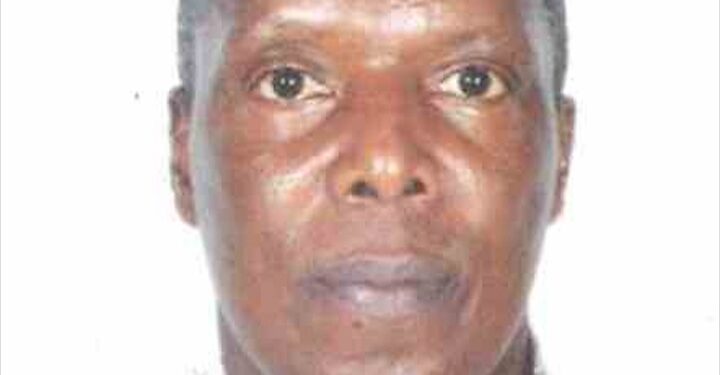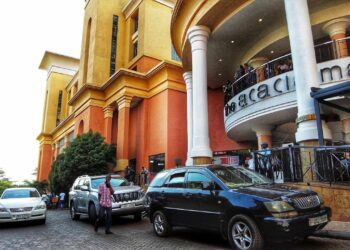Fueled by diffusion of positive stories of economic interdependence, emotionally charged rhetoric and interests of some leaders, integration is transforming the regional architecture of Eastern Africa. However, it seems to be focusing on economic benefits rather thin on maintenance of peace and security especially, prevention of intra-state and inter-state conflicts – like the former overly militarized Uganda-Rwanda boarder issue. At present, the East African Community (EAC) comprises the Democratic Republic of the Congo (DRC), Tanzania, Kenya, Uganda, Burundi, Rwanda and South-Sudan. Looking at its combined GDP of USD 305.3 billion and its population of 283.7 million, its expansion has been rapid. Despite these achievements, it is beset by political instabilities, wars, poor governance and rule of law, human rights abuse together with high levels of corruption.
Article 3 of EAC Treaty states a country’s eligibility to become a Member as “adherence to the universally principles of good governance, democracy, the rule of law, observance of human rights and social justice, potential contribution to the strengthening of integration within the East African region, geographical proximity to and interdependence between it and partner states, market driven economy, social and economic policies being compatible with those of the Community”. These sets of political, geographical, economic and how EAC law is implemented at state level (regulatory regionalism) as stability mechanisms intended to deal with political instability (insecurity) in EAC Treaty were not taken seriously. I argue, that the failure to rigorously implement accession conditions laid out in Article 3 has fueled political instabilities in newest Member states.
Considering the prevailing political situation in DRC, which is the most recent entrant, it indicates that these metrics are not taken seriously because the problems of DRC did not start today. Almost all the countries that were admitted into EAC had political instabilities such as fighting with different rebel groups, challenges of rule of law that they needed to solve before admission. By undermining these conditions during the accession of Rwanda, Burundi, South-Sudan and DRC, EAC is responsible for enhancing the structural foundations of political instability that have led to insecurity in the region. Furthermore, our leaders and EAC officials have failed to understand that accession metrics are also mechanisms for political stability and transformation of conflict into acceptable political and social circles.
Although common consent indicates that there is wide regional support for EAC enlargement, the current situation in the DRC is an indicator that admission of new Member states is not well scrutinized. The accession conditions laid out in Article 3 of EAC Treaty should be rigorously applied to examine the suitability of new entrants. Besides just being accession conditions, they act as stability mechanisms, they reduce possibilities of applying state-centric policy approaches with noticeable disdain for collective security ideals. Such policies assume that issues of insecurity are caused by society not the governments in the region. In addition, they were intended to reduce likelihoods of mistakes through overly ambitious actions of EAC officials while admitting new Member states.
In my opinion, EAC officials and our leaders’ decisions and actions have fallen short of what was intended in the founding Treaty. Some of their decisions appear to be one-dimensional, not well-thought-out and augmented by fire-brigade like approaches like deployment of forces are destabilizing the entire region. Quick-fix measures by deploying regional forces to deal with conflicts fed and driven through diffusion of transnational disputes are inefficient and cannot ensue into sustainable peace. The conveyor belts of these conflicts are the helpless and uneven domestic society that needs stability through strict enforcement of accession metrics. Therefore, given the extreme appetite for expansion tilted in favor of economic benefits devoid considerations for peace and security, the possible accession of Somalia is most likely to see us fighting Al Shabab as the EAC block.
EACRF Deployment, the Easy Approach
Although deployment of East African Community Regional Force (EACRF) legitimizes EAC actions to confront local insecurity by keeping in-line with Chapter VIII of the United Nations (UN) Charter pacific settlement of local disputes Article 52, UN Action for Peacekeeping (A4P) by encouraging collective action, it has become a problem not a solution to insecurity in the region. This is because it does not build on stability and conflict transformation mechanisms as set out in Article 3 of EAC Treaty. Deployment of forces is simply taken as an easy alternative, which indirectly multiplies the burdens that were intended to be addressed through Member states accession conditions in the founding Treaty.
This is accompanied by EACRF overtly fire-brigade like approach to regional conflicts, which is very costly and deals with symptoms but not the problem or like what one writer has termed as “a bandage on a wound but not the medicine to treat the cause of the wound”. This is even made worse with a muddled EACRF mandate to “contain, defeat and eradicate” armed groups, which is unclear and lacks detail to the extent that some EAC leaders attribute diverse interpretations. President Museveni of Uganda in his letter of March 31rst, stated that “We are not going to battle or fight the M-23. The Congo government and M23, have agreed to a peace plan, which involves cessation of hostilities, withdrawal of M-23 from some of the specialized areas that have been agreed upon…”. “Our initial mission, therefore, is to occupy some of the positions that the M-23 has handed over to EACRF as a neutral force, instead of the Congolese Army which the M-23 sees as enemies or armed opponents in their internal politics”, which alludes that Uganda Peoples Defense Forces (UPDF) intervention is intended to bolster the DRC (government) Army to control its territory.
Positioning statements of President Museveni’s letter on the traditional UN peacekeeping continuum, – classical, multi-dimensional, protection and stabilization – in which peacekeepers have a mandate to protect civilians and support the government threatened by the rebels, UPDF seems to be in DRC as a protection and stabilization force. They are there to protect the civilians and at the same time facilitate the DRC government to stabilize the situation and spread its control over the territory originally controlled by M-23.
The statements in the letter show some misperception between neutrality or inactivity and obscure the clarity offered by the UN peace operations Capstone doctrine. The Capstone doctrine stresses a secure and stable environment through strengthening the ability of the state to provide security, rule of law, promote and protect human rights. In addition, EACRF cannot be in DRC to aid its government to control its territory yet, the DRC government already has an understanding on how they can settle their internal political problems? Uganda and other EAC states seem unfamiliar with the transnational nature of the divers of the DRC conflict. Unlike North Atlantic Treaty Organization (NATO) Members with their effective and more appropriate approach of directly strengthening the state of Ukraine in the Russia-Ukraine conflict, EAC Member states seem to be with an approach made up dots that cannot connect to one another.
Hence, the liberal approach to peace as adopted by EAC is unproductive like those other UN peace missions such as Organization Stabilization Mission in Democratic Republic of Congo (MONUSCO). In addition, EACRF forces present divergent interests from individual EAC Member states that undermines synergy among the forces and leads to a multiplicity of agendas subsequently into diverse ideologies. Above all, as the saying goes that you espouse to neighbors the values you have in your home, going by classifications of Freedom House index, Mo Ibrahim Foundation Index and Afro-barometer perceptions, EAC Member states rule of law, democracy, human rights and good governance levels are poor. Hence, they cannot collectively espouse or diffuse appropriate norms to DRC. At a deeper level, this may lead them to transpose poor practices by their armies and police, which are normally geared towards protection of governments not the entire nation. Hence, this will influence the DRC regime to oppress all other parties involved in the conflict supervening democracy and rule of law ultimately into persistent political instability.
Numerous news and UN reports have suggested that M-23 is supported by Rwanda and that some militias in the Ituri region are proxy actors of Uganda. Such conflict fed and driven by transnational influences cannot be contained through a liberal peace keeping approach embraced by EACRF. This approach is made more inefficient by the mistrust and uncertainty among Congolese civilians that needs a lot of damage control by some EAC troop contributing states as indicated by the reports. For example, Uganda, Rwanda and Burundi have always had unilateral interests for deploying forces in DRC such as pursuing rebel groups opposed to their governments, which has created complaints from sections of the Congolese society. The deployment of Ugandan soldiers is simply an addition to operation Shujaa numbers already operating in North Kivu and Ituri against the Allied Democratic Forces (ADF) as stipulated by Article 124 of EAC Treaty while, for Burundi it complements its already existing covert operations against Republic Forces of Burundi (Popular Forces of Burundi) operating in South Kivu province against the Burundi government. The deployment of troops from all these countries just fuels broader animosity that the different armed groups might turn to their advantage. This builds uncertainty that may force DRC to exit the entire security collaboration with EAC – in short, EAC is collectively more of a problem to the DRC-M23 and other rebel groups conflict than its inverse.
Any alternative to the Easy Approach?
Given that the drivers of the DRC conflict are transnational there is only one effective approach to the conflict – the liberal peace approach of imposing peace by EACRF forces is inherently defective and shows that the leaders in the region do not understand the nature of the conflict and its drivers. They just adopted deployment of EACRF as just an easy alternative approach.
A better approach is a bottom-up approach building on EAC Member states accession metrics. It should focus on entrenching the rule of law, human rights, good governance and democracy. Therefore, appropriate measures should focus on bottom-up approaches like rule of law, human rights, prevention of corruption as put by the Article 3 of EAC Treaty. These lead to reduction in inequality and helplessness among the domestic population, which act as conveyor belts for diffusion of transnational disputes into the DRC society. Although this has been neglected because its implementation requires more work, it remains the most appropriate solution to sustainable peace and stability in DRC.
Really how did we get where we are? It is simply because the accession metrics were never meticulously applied, had they been followed the newest entrants that happen to be politically unstable would not have been admitted. Therefore, the preference for EAC Member states is to strictly apply both economic and political pressure against all those involved in the DRC conflict – if possible stringent sanctions on those responsible for the conflict. In addition, EAC and other Member states must pressure DRC to make sure that it implements rule of law, democracy, good governance by reducing corruption and improve public policy on which collaboration with DRC should be contingent on their promotion and protection.
Joachim Mugyenzi
Joachimmugyenzi@gmail.com
Executive Director
Great Lakes Centre for Strategic and Global Policy (GLCSGP).
Do you have a story in your community or an opinion to share with us: Email us at editorial@watchdoguganda.com













